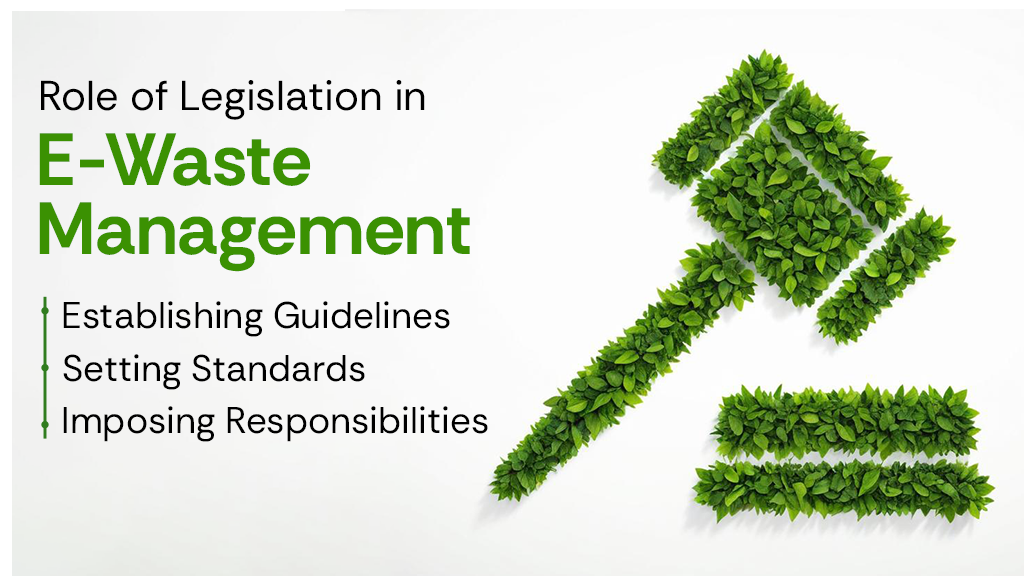In our increasingly digitized world, electronic devices have become an integral part of our daily lives. However, technological advancements have led to a surge in discarded electronics, commonly known as e-waste. This growing problem poses significant environmental and health risks due to the toxic materials contained within these devices.
Effective e-waste management strategies and robust regulations are essential to mitigate the negative impacts of e-waste. This blog will explore how various countries have implemented e-waste laws to address this pressing issue and how companies like Namo E-Waste are playing a pivotal role in driving sustainable solutions.
The Escalating Challenge of Electronic Waste
E-waste is the term used for unwanted electrical or electronic gadgets. It is also frequently called waste electrical and electronic equipment (WEEE) or end-of-life electronics. This encompasses a variety of items, such as refrigerators, washing machines, computers, smartphones, and televisions, used both at home and personally.
The problem of electronic waste is growing to a great extent. According to the Global E-trash Monitor, the world generated around 60 million tons of electronic waste in 2020, with a 21% increase expected by 2030. The incorrect disposal of e-waste causes significant environmental dangers since it contains dangerous substances such as lead, mercury, and cadmium, which can leach into soil and water and cause long-term harm to ecosystems. The challenge lies not only in the huge volume of e-waste but also in the complexity of e-waste management and its safe collection, recycling, and disposal.
Global Legislative Framework for E-Waste Management
Dealing with the e-waste problem and sound e-waste management necessitate strong legal structures on both the domestic and global scales. Although different international treaties and agreements have been created, how these laws are put into practice and upheld can vary between countries and regions.
Key International Treaties and Agreements
- Basel Convention: This treaty regulates the transfer of harmful waste substances. The goal of this agreement is to protect the environment as well as people from the negative impacts of generating, managing, transporting, and disposing of these waste materials. The convention has 170 member countries known as parties.
- Stockholm Convention: This convention addresses dangerous substances contained in electronic gadgets, such as PCBs and BFRs, which are referred to as persistent organic pollutants. Its purpose is to reduce or restrict the production and use of these harmful compounds.
- Rotterdam Convention: This is an international environmental agreement that encourages the exchange of information concerning compounds that endanger human health or the environment. It includes standards for the prior informed consent process, which requires countries to be informed about the hazards ahead of time and have granted their consent.
Regional and National Legislation
Apart from global treaties, numerous nations and areas have established their laws regarding effective e-waste management. These regulations frequently encompass:
- Producer Responsibility: Manufacturers are required to take responsibility for the disposal of their products at the end of their lives, which includes electronic waste. This may include establishing collection methods, recycling plants, and funding disposal expenses.
- Extended Producer Responsibility (EPR): It is a regulation that requires manufacturers and importers to handle the disposal and recycling of their products. This signifies that companies have a legal duty to reclaim their products once they are no longer in use and guarantee they are disposed of in an environmentally conscious manner.
- Waste Management Regulation: It consists of the regulations and guidelines that control how different types of waste are handled, stored, and disposed of properly. This set of rules is designed to safeguard the health of the public and the environment through proper e-waste management as well as handling.
Exemplary E-Waste Management Legislation: Case Studies
Many countries have shown effectiveness in handling electronic waste by implementing strong laws and creative methods.
- Germany is frequently referred to as an example of good e-waste disposal practices. The Recycling Management Act in the country enforces a circular economy by mandating manufacturers to reclaim their products once they reach the end of their lifespan. Germany has efficient systems in place for gathering and reusing electronic waste, leading to increased rates of recycling and minimizing the environmental effects of old electronics.
- In Japan, consumers are required by the Home Appliance Recycling Law to pay a recycling fee when buying new electronics, which finances the appropriate disposal of old items. This system, along with the country’s strict product stewardship rules, has resulted in notable decreases in electronic waste and higher rates of recycling.
Challenges and Criticisms of E-Waste Legislation
E-waste management encounters major obstacles caused by insufficient laws, varying regulations worldwide, and a lack of enforcement. Even with 53.6 million metric tons of electronic waste produced worldwide in 2019, just 17.4% was properly gathered and processed. The U.S. has a variety of state laws, which create inefficiencies. Developing countries face challenges with importing electronic waste, worsening environmental and health hazards. To address the escalating e-waste crisis, effective management necessitates coordinated global legislation, improved infrastructure, and heightened public consciousness.
A Sustainable Future for E-Waste with NAMO eWaste
Namo eWaste is revolutionizing e-waste management by following strict laws and utilizing advanced recycling techniques. Our forward-thinking method helps to close gaps in worldwide e-waste regulations and increases public knowledge, establishing a standard in the field. Through promoting innovation and adhering to regulations, Namo eWaste is not just keeping up with current e-waste management guidelines but also influencing a sustainable future for electronic waste.


